I am never fully prepared for photographing a military homecoming. It’s that moment of emotional impact when the planes buzz overhead and the families realize that it’s really happening. It’s FINALLY the big day. Their loved one is coming home. It’s an intense, emotionally charged time of love and excitement that I adore documenting for families.
As a family photographer and military spouse stationed just outside of Naval Air Station Whidbey Island in Washington, I have a unique opportunity to document military homecomings several times each year. Working with military families is some of the most fulfilling work out there. But homecoming sessions are unique and require special planning. You need to be confident in what to expect so your clients don’t have to worry about you (because trust me, they have a LOT on their minds already)!
If you’re considering photographing a military homecoming or adding these sessions to your photography business, here’s what you need to know:
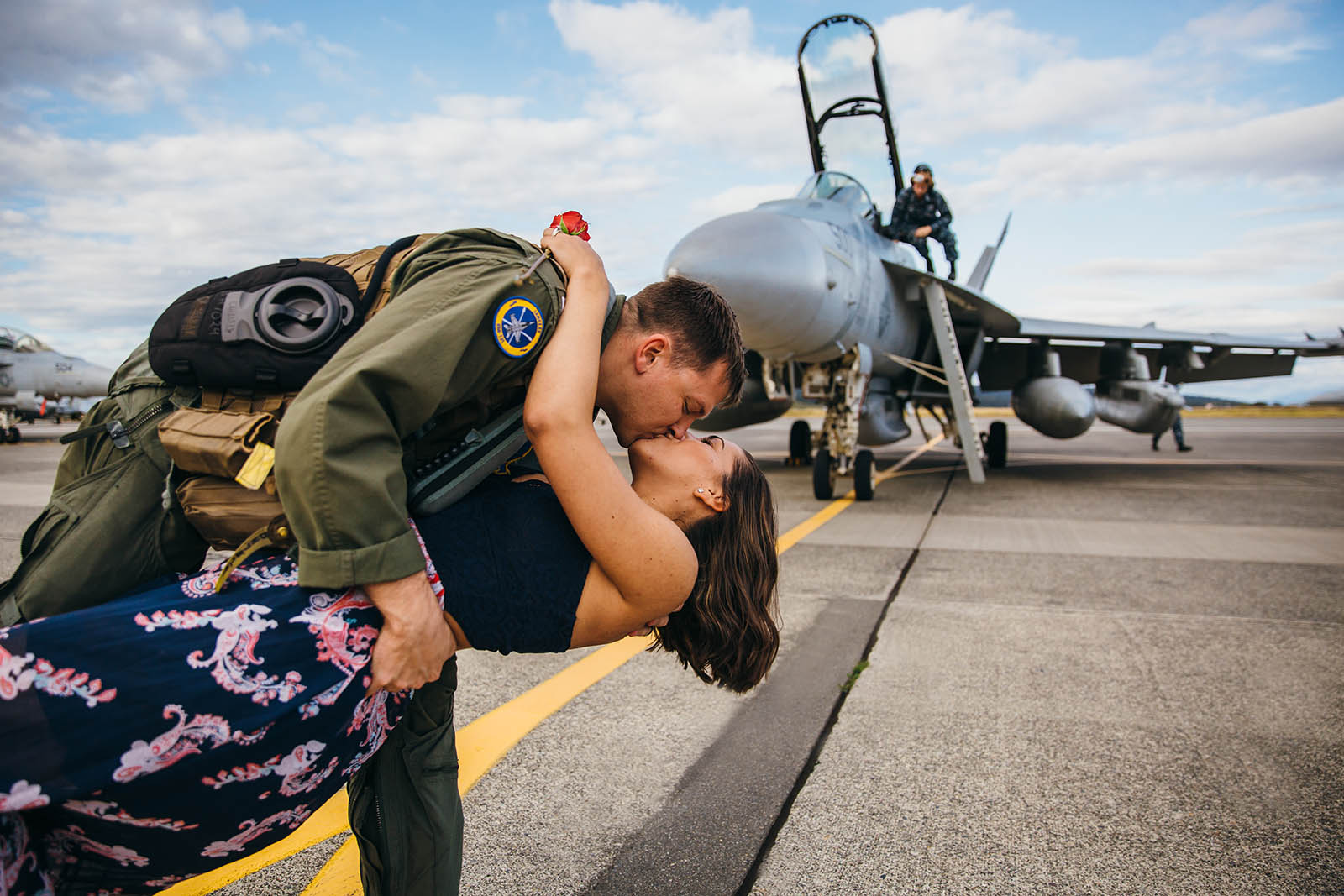
Before the session
1. Be (very) flexible with scheduling.
One of the biggest challenges in preparing to photograph a military homecoming is nailing down a session date and time. While families often have an idea of when their loved one is returning, the date could be moved several times before your session and you may have to rearrange your schedule to accommodate the new date or time. Don’t get frustrated or impatient. If the families can roll with it, so can you.
I keep a first-come, first-served client list by month, and can typically shoot one or two homecomings per squadron or unit as long as they don’t come home on the same day. I let my clients know if there is someone above them on the list and try to help them find a replacement photographer as soon as I’m aware of any scheduling conflicts. For my business, I start keeping lists for homecoming photo sessions 6-12 months out, sometimes before the deployment has even begun!
My clients typically keep me up-to-date with any changes, but it’s always a good idea to check in a month or two before the planned homecoming, just to see how your client is doing and if they need anything from you. They have a lot on their plate preparing for their loved one’s return, so taking the lead and letting them know you’re on top of things will make them feel good.
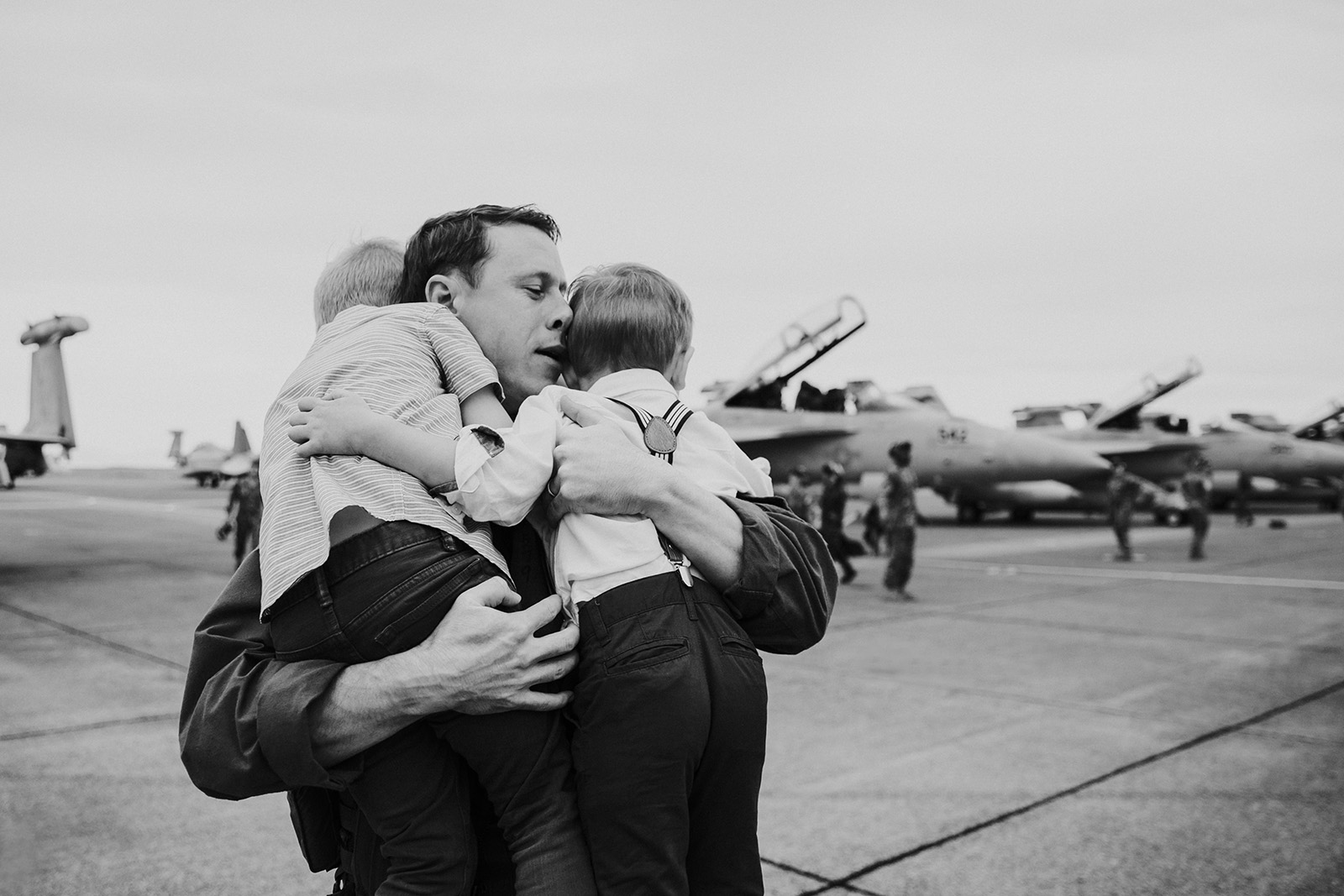
2. Get the details and know the security requirements.
It’s important to understand the logistics of the military homecoming well in advance. Most homecomings are held on military bases (some may take place in airports). You need a military ID to get onto most bases. If you don’t have one, your client may be able to put you on a guest list with the gate, get you a pass, or let you follow them into the base.
Cell service is often spotty on bases, and buildings or hangers may be challenging to find. You’ll need to know the specific location of the homecoming, which gate to enter through, when to arrive, and where to meet your client. A map of the base and an office number to call in case of emergency may also be helpful.
Due to security concerns, your client may need some personal information for the squadron or unit to run a background check if flight line access is permitted. Background checks often take a week or longer, so don’t wait until the last minute. I have known of photographers who were turned away because the base did not have their information.
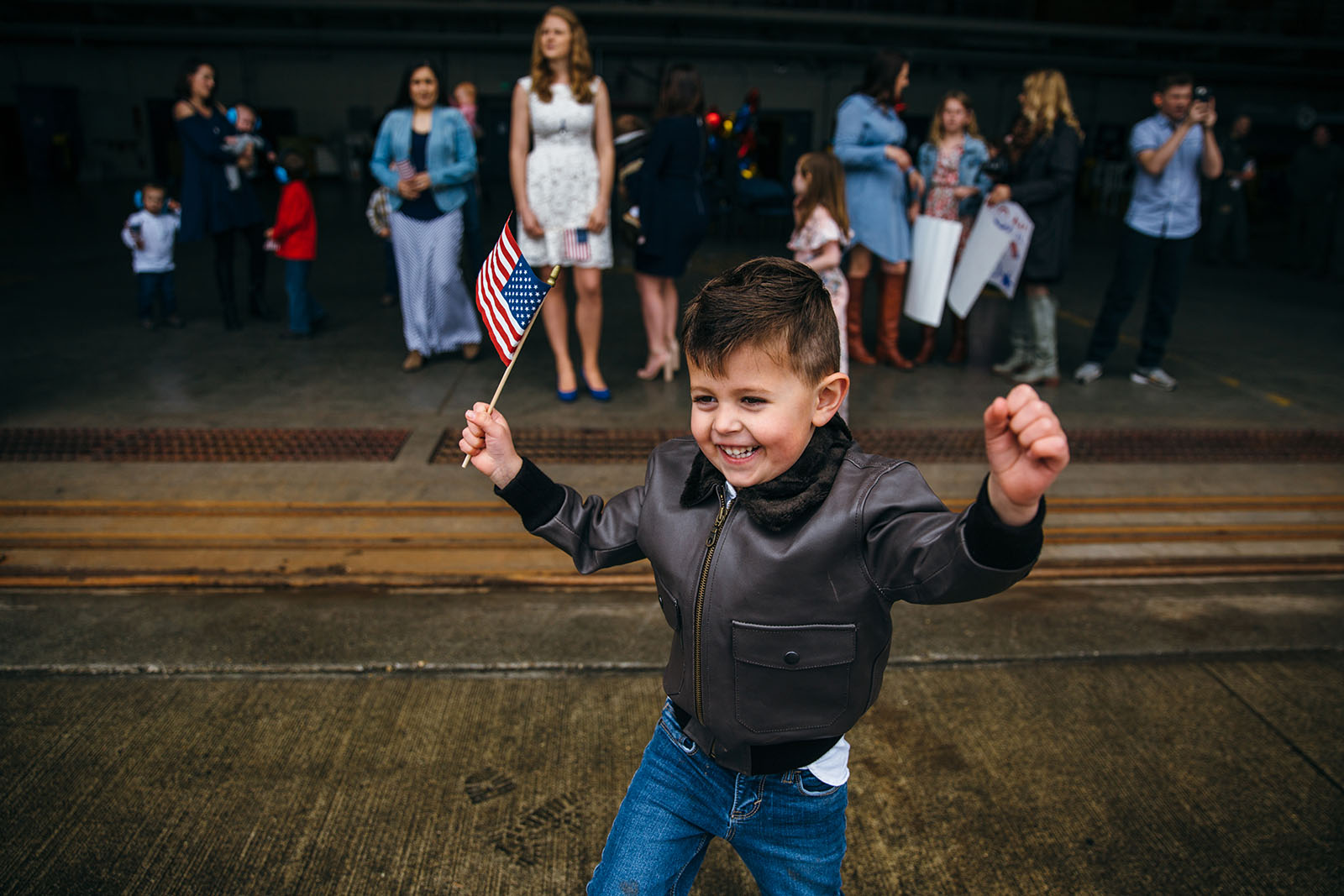
3. Understand your client’s story.
You may want to ask your client for a brief background on their family’s military life and career. This can give you an idea of the significance of the day. Every homecoming is special, but if this is your client’s first or last homecoming, it will be important to know.
If your client feels comfortable sharing, you may learn of a family event that happened during the deployment, (like a death in the family or a child being born), in which case the reunion will be extra emotional.
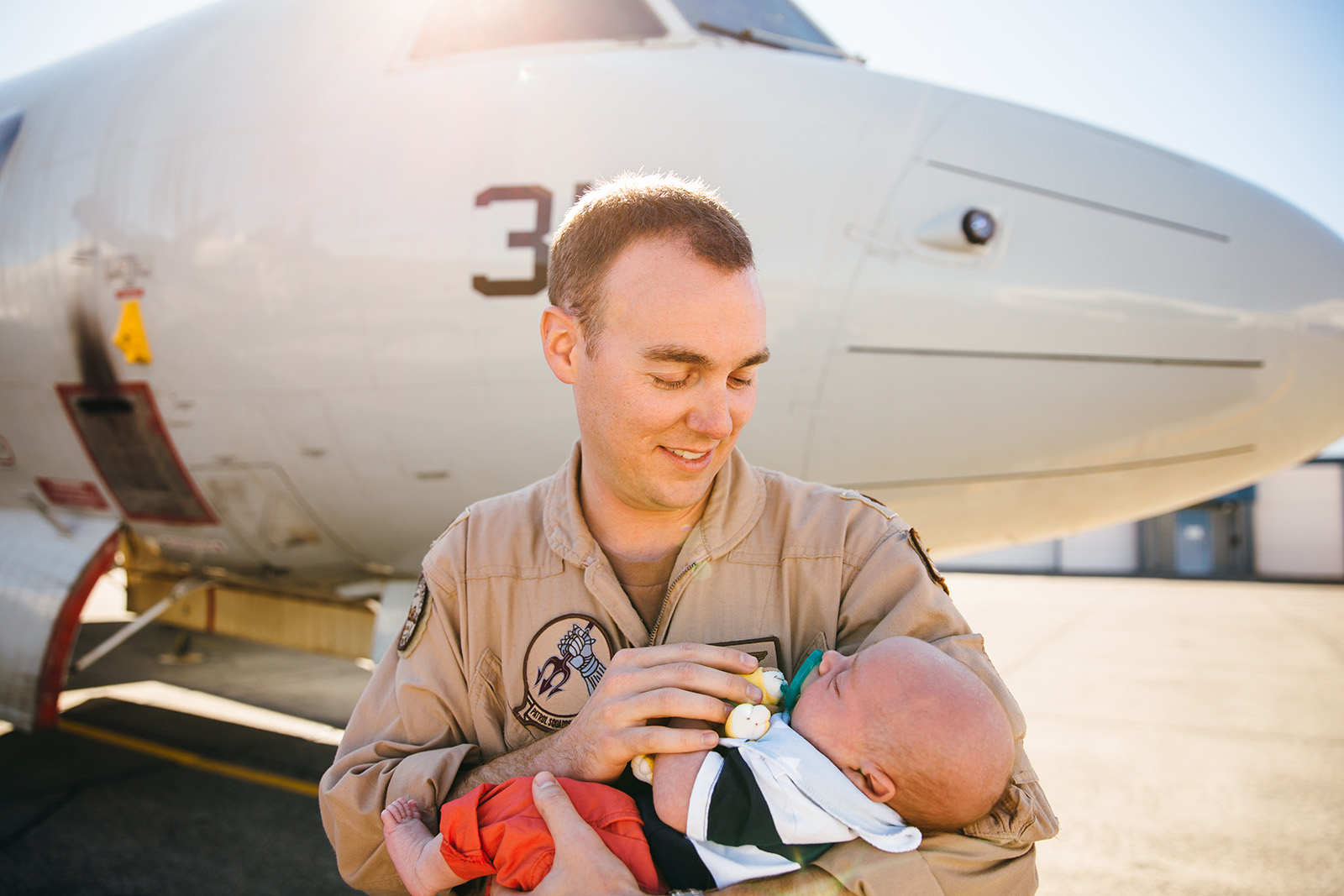
Military families:
- Less than 1% of the population of the United States serves in the military in some way.
- The average military family moves every two to three years.
- The average length of a deployment is 6-12 months, and many service members deploy every year.
- There are currently 1.2 million military children of active duty members worldwide.
- The average military child will change schools 6 to 9 times.
Military discounts
Military families often receive (and appreciate!) discounts from companies, typically around ten percent. I offer a discounted fee for homecoming sessions and I don’t raise the price annually. I also don’t require a deposit or penalize the client if the session doesn’t occur, as homecoming dates shift frequently.
The day of the session
4. Be prepared and expect the unexpected.
You need to be ready for anything when photographing a military homecoming. Planes come in early, late, or sometimes not at all. If there is a mechanical issue in route, they may turn back or land somewhere else. If you have a babysitter for your own kiddos, make sure you have wiggle room in case the homecoming gets delayed by an hour or two.
Homecomings rarely happen at golden hour. Be ready for full sun, rain, or windy conditions. I always bring an extra layer of clothing, fingerless mittens, and wear shoes or boots I can run in. It’s a good idea to carry extra tissues and wipes as well.
I personally try not to shoot sessions in the dark, as I don’t think flash does the homecoming justice. Also, I’m unable to leave my kiddos at night when my husband is away for work. If I can’t shoot the homecoming for some reason, I offer my clients the discounted homecoming rate for a full family session at a later date.
Pro Tip:
You can bring little treats or snacks (like Pez or smarties) for the kids to help them warm up and get used to you before the action happens. I also bring water and snacks for myself so that I don’t have to eat the goodies set out for the families.
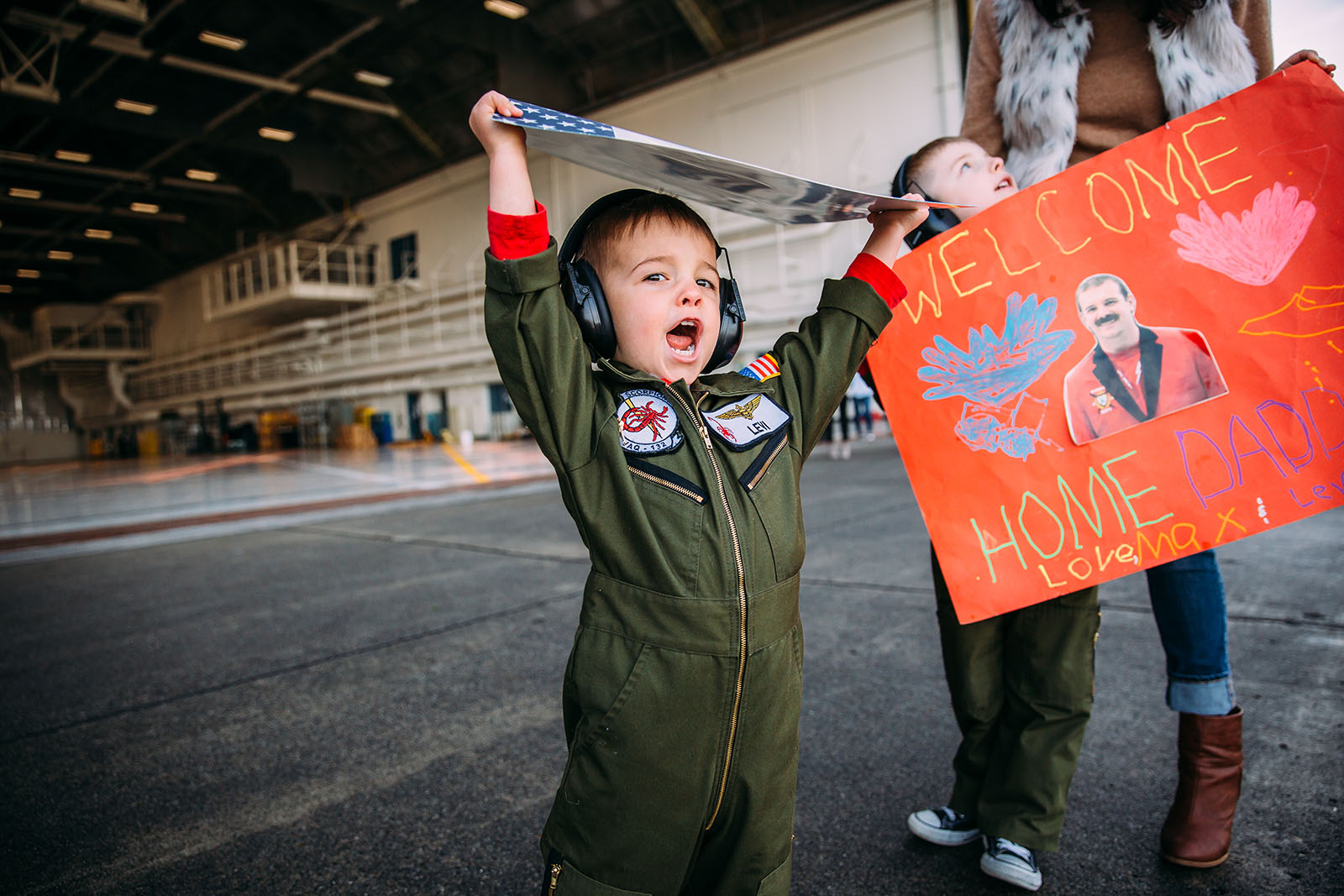
5. Get there early.
I like to get to the location 45 to 60 minute early. I try to time my arrival with my client’s arrival, in case I can help bring in kids, strollers, or signs. During this time, before the planes land, I try to get to know my client better and set expectations for the reunion. It happens so fast, and I want them to know that they do not have to think or worry about me.
While we are all waiting, I observe and document the anticipation.
You absolutely do not want to miss capturing the incredible moment when the plane lands and the service member is reunited with his or her family. The moment they are given the OK, the kids’ feet fly as fast as they can to reach their parents, crashing into them with hugs and tears and relief. Because even though they’ve been loved and cared for, they haven’t really been whole until that moment. Document this raw emotion.
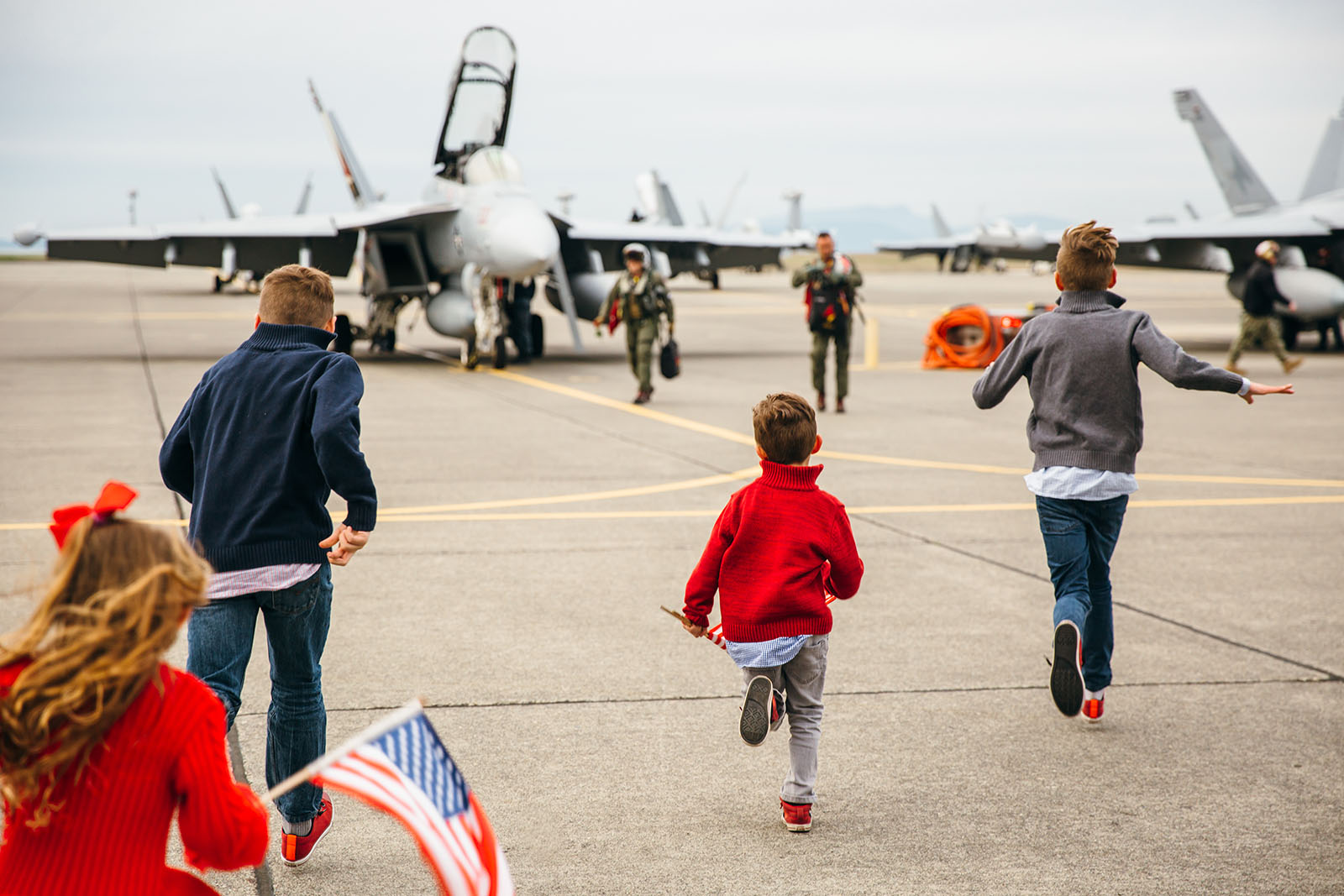
6. Be present, but give the family space.
While I shoot with prime lenses for all of my other photography work, I shoot homecomings with a wide-angle zoom lens (I use the Canon EF 24-70 f/2.8mm II USM), because capturing the moment is important, but letting the family have their special moment together without you being on top of them is critical.
When documenting a military homecoming, it’s important to roll with the action while embracing the emotion. Every homecoming is different, so stay on your toes and look for new angles and stories to tell. Look for ways to be helpful to your client as well. Babies have blow outs, kids get messy, and emotions run high. Sometimes kids don’t want a camera in their face. Be observant and gracious.
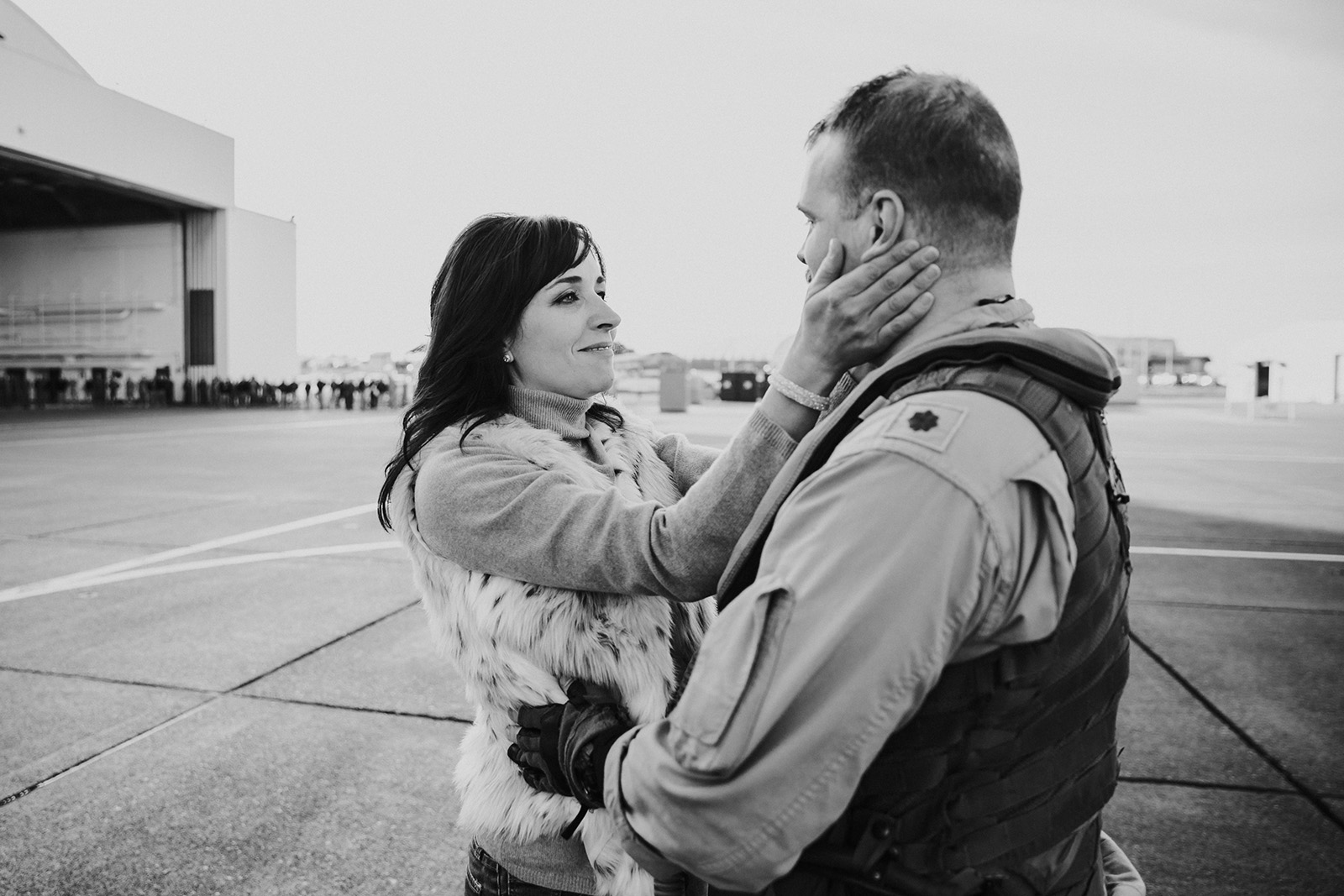

7. Don’t be afraid of emotion.
Homecomings are completely organic and unpredictable sessions — planes may land early in the morning, at night, in the rain — but it doesn’t matter because it’s not about the environment, it’s about documenting the experience of a family reuniting after spending months and months apart.
While you may not always know what to expect, know that your job will be easy because the joy and excitement is palpable and translates into every image. Don’t be afraid to show the emotion of the experience — both in the family and in you.
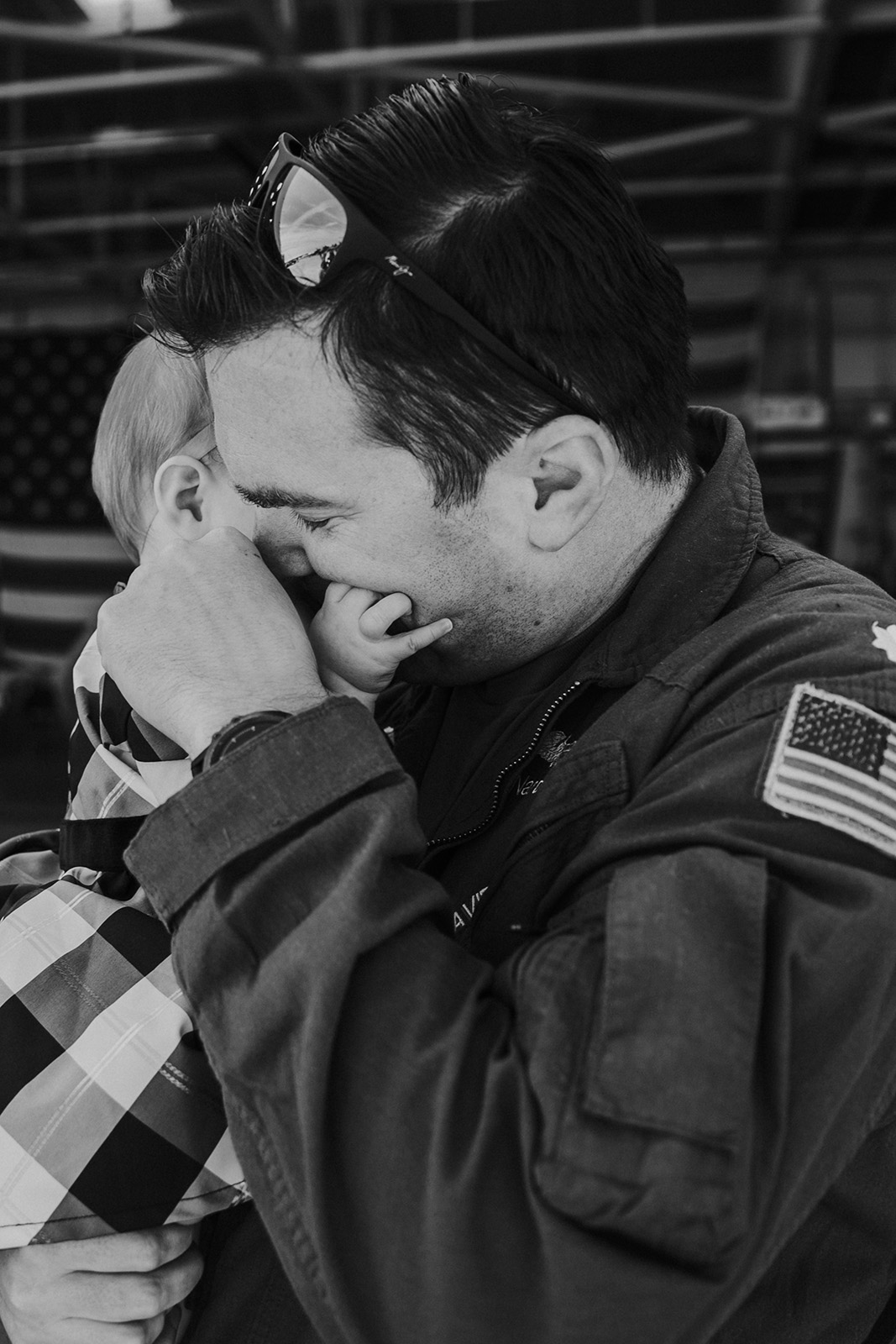
8. Stick around to photograph the rest of the story.
After the initial reunion, there may be a few logistical things to take care of before the service member can check out. Once all the business is out of the way, I ask the family for 5-10 minutes to take some additional pictures where I can lead and give direction.
I don’t reenact the reunion, but I get pictures in front of the plane, of the family walking to and from the hanger, and of the service member with just the kids and/or just the spouse.
Make sure you’re not in an area that is off-limits, and ask if you can take pictures of the planes or equipment beforehand.
Pro Tip:
These images are great for rounding out the story of the homecoming, but do not drag this out. Everyone wants to get home and be together as soon as possible.
After the session
9. Same-day sneak peeks are a must.
From friends to family, everyone is waiting for the news that their loved one made it home and that the family is reunited. Sending a few same-day sneak peeks will go a long way, both for your client and for your social media. I get the biggest organic traffic boosts when I post these emotional images. I often have strangers commenting on the homecoming photos, thanking the family for their sacrifice.
When you post images, you may want to give vague details about the homecoming, like the squadron or unit’s name, and the service member’s name and rank. Make sure you ask your client first. Don’t post anything you’ve learned or observed in case there are security concerns. Most military families limit their social media profiles in some way.
Pro Tip:
The service of a same-day peek will not be lost on your client. If you don’t send them your beautiful images, they’re going to use a phone pic!
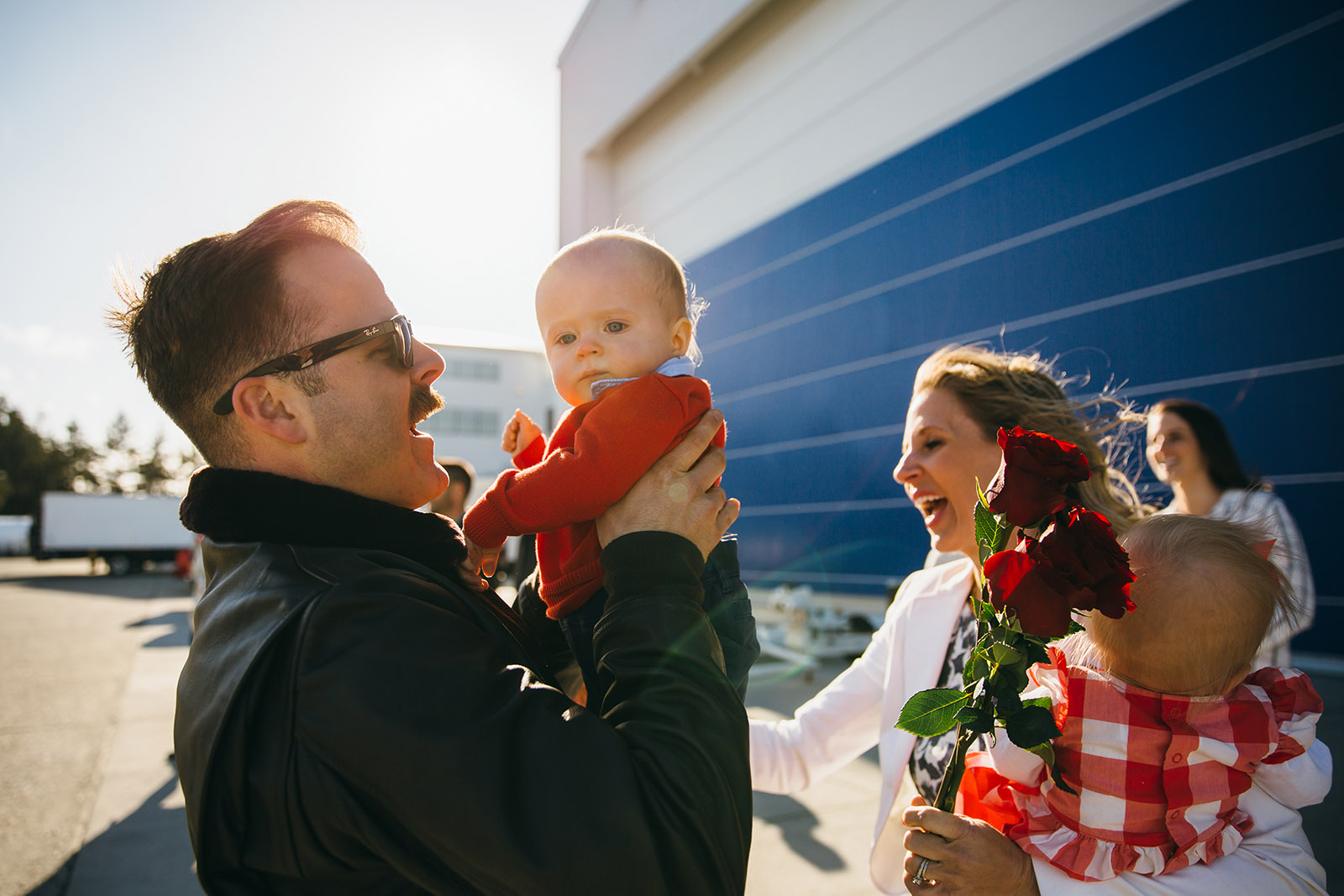
10. Posting military homecoming galleries is great for business.
Posting military homecoming galleries to social media is some of the best marketing for my business. The visibility is huge, and I typically book at least one regular family session after posting a homecoming gallery or blog story. Families love to share their galleries with their friends (i.e. your future clients) so it’s definitely worth the effort to put together a beautiful blog post and image gallery.
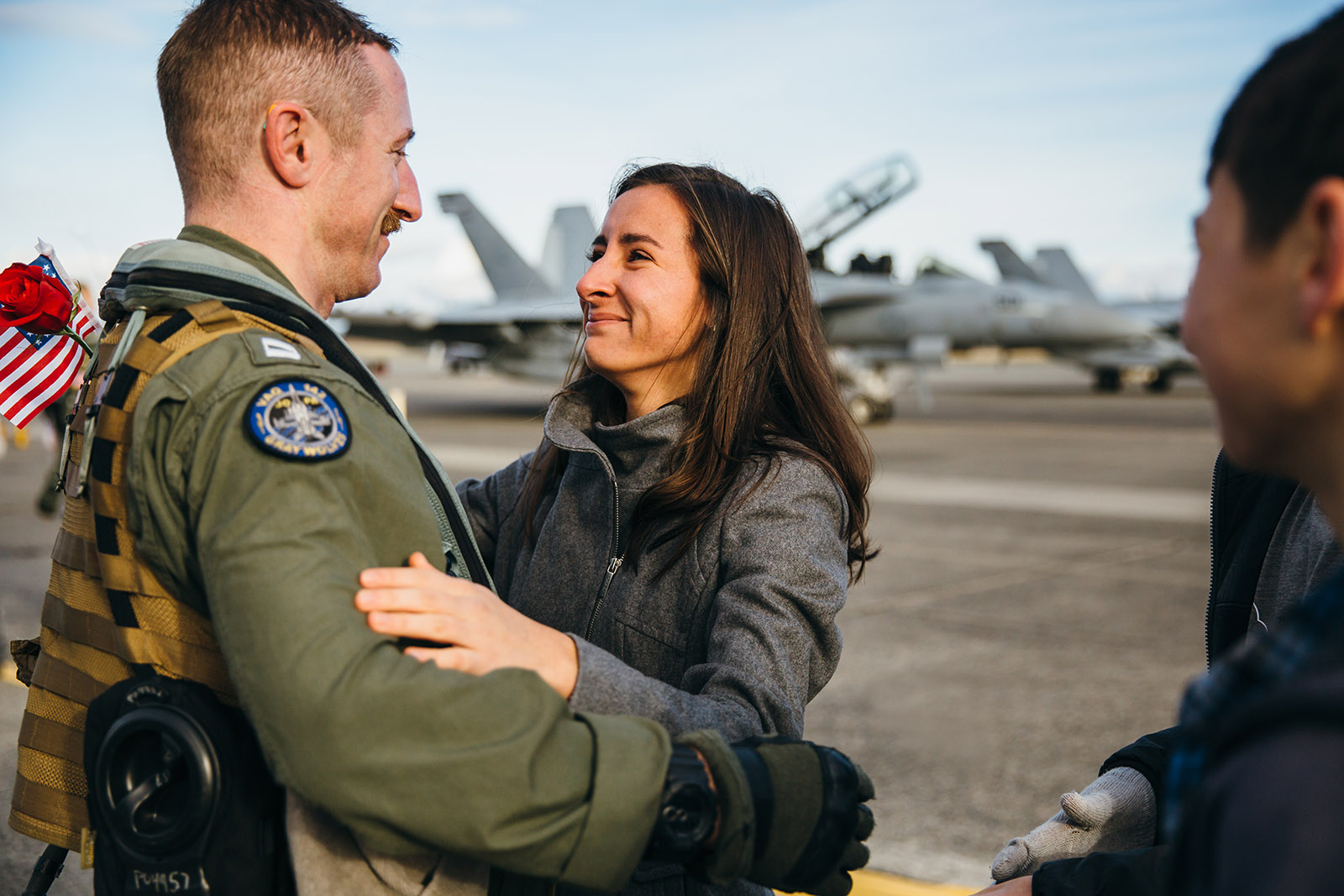
Military families sacrifice so much, but most people don’t see it every day.
The cycle of work-ups, deployments, and homecomings seems like a normal way of life inside the military community. But the sacrifice is really unique. That’s what I love most about documenting and sharing homecoming sessions.
I receive so many messages from people who don’t even know the family who was reunited, but who thank them nonetheless and express how the images moved them to tears. As part of a military family and as a photographer, that’s my goal: to make sure people outside of our community see what an amazing sacrifice it is not only for the service members, but for the family that stays behind.
A little support goes a long way.
If you can’t photograph a military homecoming, or don’t live near a base where they occur, find other ways to support the military community. A phone call, card, or care package means so much, especially on holidays, birthdays, and anniversaries when families are separated. For my daughter’s birthday, I invited neighbors over to sing and have cake after dinner — just a little something so she wouldn’t focus on daddy being away. I expected one or two to show up, but they all came over and made her day (and mine).
Here are a few ways you can support military families:
- Offer discounted sessions around Veteran’s Day or Independence Day, and donate part or all of your proceeds to an organization that supports military families.
- Shoot a purple-themed project in April to bring attention to the month of the military child.
- Share patriotic-themed images and written thanks around Independence Day, Memorial Day, and Veteran’s Day to show your support and respect for the military community.
- Support organizations that serve military families, like the Fisher House Foundation, Operation Homefront, and your local USO chapter.


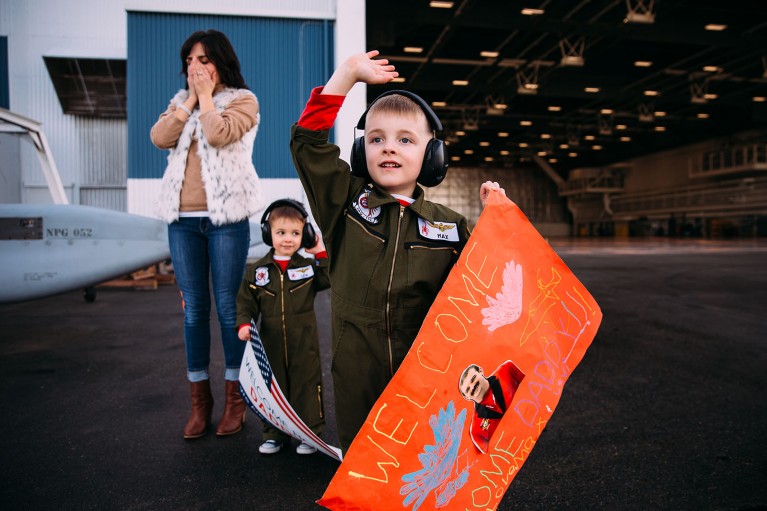

As a former military brat (Dad is retired now), reading this whole article actually brought tears to my eyes! ! What you describe is completely true and the emotion from a military homecoming is real and it’s raw and the images you provided with the article are breathtaking! I am now a military sister and I did a homecoming shoot for my brother meeting my niece for the first time. The images that I captured were stunning and I would be more than willing to do it again if and when I need it. There is nothing more pure than that.
Loved reading this! I can’t wait for our photographer to capture our first homecoming!!! As a family photographer, the logistics of scheduling a military homeschooling seems so complicated. It was explained to me as being similar to scheduling a birth session. So many moving parts leading up until they arrive!! Kudos to homecoming photographers… That moment is so important to capture for a lifetime of memories!!!
Kara, these are amazing!! These are such special sessions you offer!
I loved reading this Kara! As a Veteran and the wife of a Veteran I understand just how important your job is at capturing an extremely emotional and special time. Thank you for serving those that serve with such graciousness and support!
Great article! Love all of the photographic examples as well.
Thanks so much Amber!
You capture so much emotion through a lens! I love looking at the homecoming pics.
Thank you Magi!!